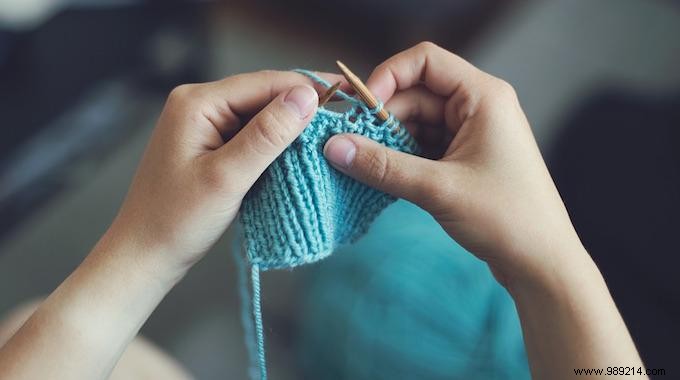
Learning to knit may not be in 1st position on your "to do list…" But it should!
No, knitting isn't just for your grandmother!
Knitting is an activity full of benefits that nobody knows.
Not to mention the pleasure of having at the end something that you will have made yourself, pleasant to wear...
Something you can snuggle up in or give as a gift.
Rest assured ! You don't have to buy that horrible itchy yarn anymore... Now, you can find very soft yarns.

Few people know how to knit.
Showing one of your creations to someone who has no idea how you did it...
It's like performing a magic trick!
In addition to the gaze of others, do something with your own hands is always very rewarding.
You'll be proud of yourself, even if your little sweater or scarf isn't perfect, you're the one who made them from A to Z!
Once you master the technique of knitting, knitting is a very relaxing activity. When you make a simple piece, the stitches are always the same.
So you can escape mentally and let your gesture memory work automatically.
The repetitive and relaxing movement will give your body and mind the same benefits as a meditation session.
Except that in addition, you will have a nice cover at the end!
To discover: Meditation:The 7 Scientifically Proven Benefits to Your Brain.
The rhythmic movements and the concentration necessary for your work help you to divert your attention from the causes of anxiety, depression or stress.
Knitting comfortably seated helps lower your heart rate and lower your blood pressure after just a few minutes.
As soon as you feel the first signs of anxiety or depression creeping up on you, grab your knitting needles to help contain these symptoms.
Knitting stimulates the whole brain :
- the frontal lobe (which directs the process of rewards,
- attention and planning),
- the parietal lobe (which processes sensory information and spatial navigation),
- the occipital lobe (which processes visual information),
- the temporal lobe (which is involved in storing memories and interpreting language and meaning)
- and the cerebellum (which coordinates the precision and planning of movements).
Knitting is thus an activity used to help people with degenerative disease like that of Parkinson's.
This improves the motor skills of patients and makes them forget about other often painful symptoms.
While it improves your motor functions and your mood, knitting also stimulates your brain to keep it healthy.
Like any muscle, the more you use it, the longer your brain stays healthy.
According to several recent studies, older people who engage in manual labor (such as knitting) have a reduced risk of "mild cognitive impairment".
This decrease is 30-50% compared to those who do not.
As with your brain, you need to mobilize your joints to keep them healthy too.
For many doctors, it is obvious that using the fingers in a gentle way strengthens the cartilage, instead of weakening it.
For example, knitting is more beneficial than typing on a keyboard because this activity does not generate sufficient pressure on the fingers.
And of course, knitting has no negative side effects afterwards.
Already have arthritis? Soak your hands in warm water before using your needles to make your masterpieces.
There you go, you now know the benefits of knitting on your moral and physical health :-)
All you have to do is go to the nearest haberdashery to equip yourself with soft wool and knitting needles.
Some stores even offer free or very accessible courses for beginners. Ask around.
If you can't integrate a course, there are still the tutorials on YouTube.
That's how I learned.
And believe me, once you get the hang of it, at home, on the train or on vacation, you can't live without it!